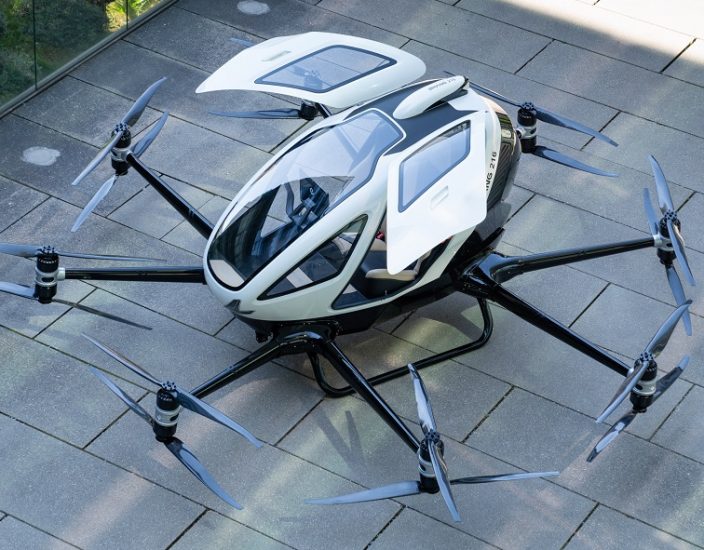As part of the SESAR project CORUS-XUAM, a very large-scale demonstration, led by ENAV with support from D-Flight, Distretto Tecnologico Aerospaziale (DTA), Pipistrel, Techno Sky, NAIS and Eurocontrol, has just taken place at Grottaglie-Taranto civil experimental airport in Italy. The demonstration focused on guidelines for safe depot-to-depot operations between two logistics centres within a suburban area of the city of Manduria.
Flight tests featured a fast UAM vehicle and other drones for specific operations and demonstrated the coordination and interoperability between ATM and U-space for the management of Urban Air Mobility cargo traffic. The demonstration was carried out safely and involved a Pipistrel fixed-wing aircraft piloted to transport medical / health cargo from a central hub (Taranto / Grottaglie airport) up to the airfield. Upon arrival, part of the cargo was prepared for the final delivery operation performed with a drone, with a take-off mass of about 25 kg. It was conducted by Techno Sky, which successfully reached the area of Manduria, thus demonstrating the ability to operate in urban areas.
Results from the Italian cluster project were presented at Bari Polytechnic where representatives from Eurocontrol, national aviation authorities, SESAR JU and ENAV met to view the results and discuss future technological development objectives to make air traffic increasingly digitised and integrated with manned and unmanned aviation.
Smart cities will be the primary beneficiaries: new Urban Air Mobility services provided via drones will be able to make public administration more efficient. Furthermore, it will be able to access the airspace for urgent deliveries. It will increase delivery services with less environmental impact (being carried out with air vehicles with electric propulsion) while reducing traffic congestion.
The U-space solution included services to ensure the separation between all drone operations in a strategic way (i.e., planning and strategic deconfliction) and monitoring flight progress compliance. It also involved the authorized volume (tracking and monitoring); finally, support mechanisms in emergency and/or contingency situations for the actors involved and interfacing with ATS bodies (ENAV, D-Flight Support Desk, and digitisation of exchanges with UAS operators).
During the demonstrations, D-Flight’s Drone Detection service was used, based on a system equipped with antennas capable of detecting the presence of non-cooperative drones.
The Italian demonstration confirmed that the tested U-space services are mainly ready for emergency transport. For example, operations with drones in peri-urban and urban areas, regardless of the size of the drones used (UAM cargo drone vs. small drone if appropriately authorized for operations).
The demonstration has also shown technological issues are still open. They have confirmed the importance of performing validation campaigns and contemplating various scenarios to enable the development of tangible UAM services to be delivered with drones to institutions and private users.
For the ENAV group, coordinating and leading the CORUS-XUAM trial made it possible to face the UAM accommodation by evaluating U-space solutions and the necessary synergies between the ATM and u-space to allow the safe use of remotely piloted vehicles also in controlled airspace areas.
The demonstration also allowed the consortium to further investigate the U-space services and collect valuable feedback for the subsequent industrialisation phase. Furthermore, the experience in ATM and U-space acquired by ENAV and D-Flight will allow the ENAV Group to contribute significantly to the definition of the European UAM operating concept, demonstrating its applicability in the Italian context and ensuring its correspondence with national interests and business strategies.
For more information visit:




